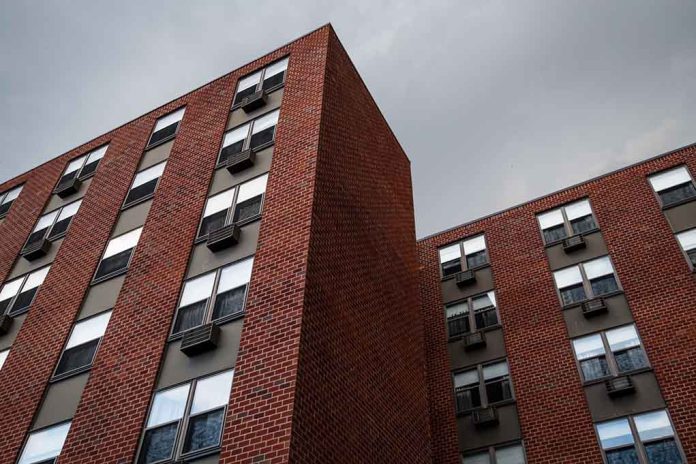
Get Off On The Right Foot With This Section 8 Housing Checklist
(DailyDig) – Section 8 house assistance is considered an economic lifeline among million, helping some save to be homeowners while allowing others to move out of bad neighborhoods.
Created by the U.S Department of Housing and Urban Development (HUD), the section 8 house assistance program helps provide underprivileged households with suitable, safe, and affordable housing. This voucher allows qualified individuals to spend only a reasonable part of their income on house rent while the government covers the balance. Although HUD administers it, the section 8 program is run by the Public Housing Authorities(PHA).
However, it’s always difficult to qualify for a section 8 voucher. The program has standard requirements which families must show for eligibility. Plus, PHA administers the program locally, which means applicants must be aware of any additional qualifications.
What is Section 8 Housing Assistance?
Also known as the Housing Choice Voucher Program, section 8 is a housing assistance program under HUD and is also known as “Section 8 project-based rental assistance,” “Section 8 assisted living,” or simply “Section 8”. It is a low-income housing program that grants housing vouchers to qualified people.
The section 8 program’s mission is to help very low-income households afford safe, decent, and sanitary housing through vouchers. Recipients who have received housing vouchers then select a housing unit they prefer. All recipients must ensure that the housing unit is listed under the Section 8 Assistance Program.
Section 8 Eligibility Requirements
Though eligibility details vary from one PHA to the next, there are four standard qualifications that the section 8 assistance program considers. These include
- Family status and size
- Income level
- Citizenship status
- Eviction history
Each factor will determine whether you qualify for Section 8 Assistance. For the program to consider and accept an individual’s application, they must meet all the requirements. Sometimes, the program allows exceptions, but applicants must ensure that the current housing situation meets as many of the listed requirements as possible.
You will automatically be placed on a waiting list once you apply for assistance because many families are applying too, and the program has limited funds.
Family status
HUD has established specific definitions and guidelines for households seeking section 8 assistance. So, to qualify, your household must meet the HUD’s definition of “family” considering the following factors:
- An elderly household with at least one member over 62 years old
- A near-elderly household with at least one member over age 50 and under 62
- At least one family member with a disability
- A family, with or without children
- A single individual living alone and who doesn’t meet any of the other criteria
- A displaced household whose member(s) has been displaced from their current residence by the governmental move, natural disaster, or other physical damage.
- A person remaining in a section 8 housing unit after other members have all moved out
While the HUD lays out these general guidelines, local PHA s have been authorized to add extra qualifications as appropriate. So, check with your PHA before sending an application to ensure you completely understand your local area’s housing eligibility criteria.
Income level
Since one of the main purposes of the section 8 program is to provide a safe and clean living place for low-income individuals, income details are one of the essential factors that define whether an application will be approved. If you apply for Section 8 housing assistance, your area PHA will consider both your family’s annual income and household size to determine the appropriate rent amount you’ll be expected to pay.
Your local agency will require a documented income from all household members who earn and any adjusted income, including overtime pay, salaries, hourly wages, alimony, commissions, child support, pension, welfare benefits, disability benefits, retirement fund withdrawals, Social Security benefits, veterans benefits, rental property income, interest earned from investments, and more. The rule of the thumb is to remember that the more people in the family, the higher the annual income you can have and still be eligible for section 8 assistance.
In general, income limits can be broken down into these three categories:
- Low income- earning less than 80% of the applicant’s area median income
- Very low income- earning up to 50% of the area median income
- Extremely low income- earning only up to 30% of the area median income
Typically, extremely low-income applicants are prioritized for immediate assistance moving up to low-income families. These income limits vary from one state to another, so ensure you check with your local PHA about the area’s specific income qualifications and limits. Each year, these limits are adjusted by the HUD to account for inflation.
Once a household is accepted for the program, they pay around 30% of the family’s adjusted income. However, the income verification process happens each year to ensure the family still qualifies for financial assistance. Applicants must also contact the local PHA if they experience a significant change in annual household income.
Citizenship status
Applicants must be U.S citizens or show immigration status documentation to qualify for the Section 8 assistance program. In many cases, applicants will be required to show a U.S passport along with a Social Security card or Green card during the application. Each family member’s citizenship status must be verified. This verification process happens once at the time of admission.
For non-citizens, section 8 housing assistance is available for families whose members are U.S citizens or have eligible documentation of immigration status. Without documentation, applicants can still receive prorated assistance as a “mixed family,” which offers less than households whose members are U.S citizens or have eligible immigration status documentation. And for households with children, applicants will need to submit birth certificate copies. You can check your eligibility status at the HUD’s Housing Choice Voucher Guidebook.
Eviction History
The section 8 housing assistance program must ensure that you can abide by the set tenant rules and regulations. The program uses an individual’s eviction history to know what type of tenant the applicant used to be, considering their rent payment history, how they met obligations, the circumstances under which the applicant left their previous housing, etc. If the PHA finds out that the potential recipient or household member has been evicted from a property within the last three years, especially because of a drug-related crime or producing methamphetamines in public housing, the application will not be accepted.
Summary
For many low-income households, finding safe, clean, and affordable places to live is their biggest concern. In such cases, the Section 8 housing assistance program proves tremendously helpful to any family receiving a Section 8 voucher and the larger society. Providing this kind of assistance allows families to find appropriate housing. However, the demand often exceeds opportunities, especially during tense economic times. That leaves many underprivileged individuals struggling to find help. Some wait months or years for vouchers, and sometimes PHAs may be forced to close the waiting list when there are more households than they can serve.
If you believe you are eligible and the section 8 program could help you, contact your local PHA through the HUD website for more information about your area’s specific eligibility criteria.
Copyright 2022, DailyDig.com













